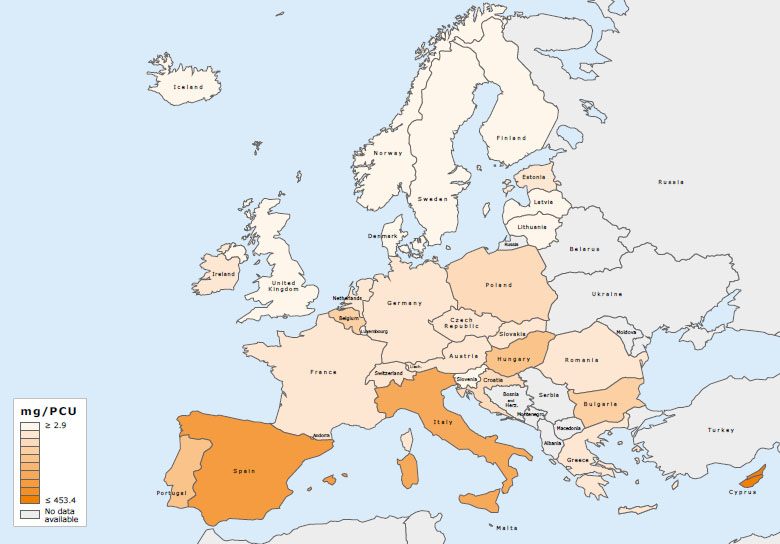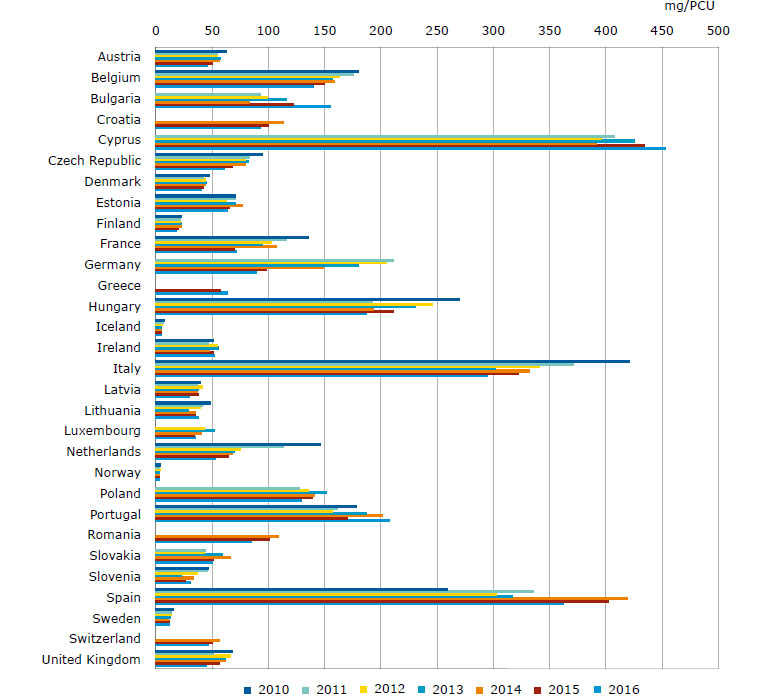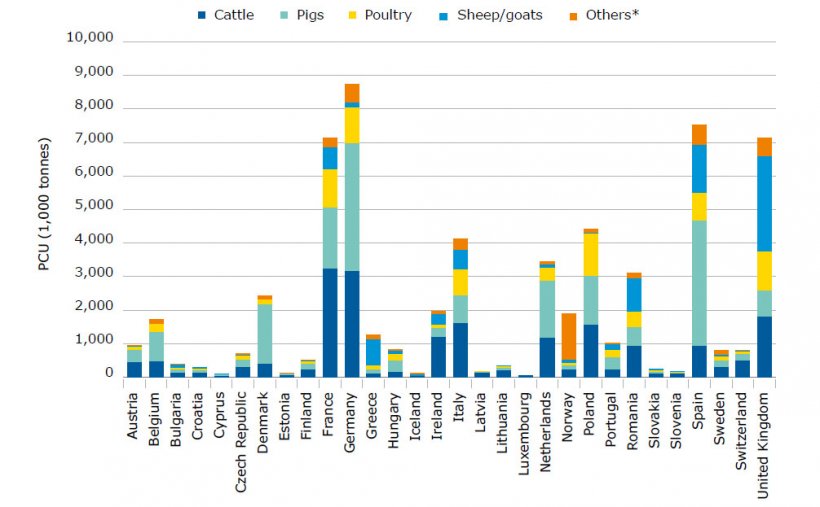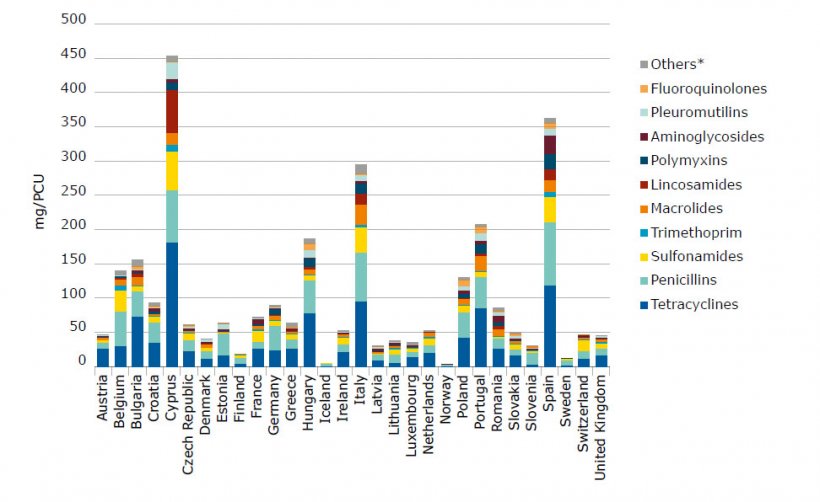The report also shows that the situation across Europe remains patchy. In sixteen countries sales have dropped by at least 5% but six countries recorded an increase of more than 5%. The substantial decline in some countries indicate that there is also a potential for a decrease in other countries.
A large difference in the sales, expressed as mg/PCU, was observed between the most- and least-selling countries (range 2.9 to 453.4 mg/PCU) for 2016; the total sales for all 30 countries which delivered data in 2016 was 124.6 mg/PCU, while the median was 57.0 mg/PCU.


Variations between the 30 countries on reported sales (mg/PCU) and on sales patterns are likely to be partly due to differences in the composition of animal populations and in the production systems in various countries. There are considerable variations in terms of the daily dose used for the various antimicrobial agents, and pharmaceutical forms and duration of treatment. These factors can only partly explain the differences in the sales observed between the 30 countries, so other factors must also be considered. Some countries have changed their national data collection systems over the years (e.g. Slovenia in 2013, Spain in 2014 and Romania 2015) and/or have identified under-reporting for some of the years (e.g. Bulgaria 2014, Spain 2014); this may have an impact on the data. Overall, this emphasises that data presented in this report should not be used for direct comparison between countries without taking into account differences between them and that changes observed over the years for certain countries should be interpreted with caution.
In total, 25 countries provided data for all years between 2011 and 2016. For these countries an overall decline in sales (mg/PCU) of 20.1 % was observed. Sales fell from 162.0 mg/PCU in 2011 to 129.4 mg/PCU in 2016. A fall in sales (in mg/PCU) of more than 5 % was observed in 16 of these countries (in the range -8.7 % to -57.8 %), whilst there was an increase of more than 5 % in six countries during the reference period (a range from 7.9 % to 67.7 %).

Regarding the distribution of the population correction unit (PCU) by species and country, Overall, pigs, cattle, poultry and sheep/goats accounted for 32 %, 31 %, 14 % and 14 %, respectively.

Of the overall sales of antimicrobials in the 30 countries in 2016, the largest amounts, expressed as a proportion of mg/PCU, were accounted for by tetracyclines (32 %), penicillins (26 %) and sulfonamides (12 %). Overall, these three classes accounted for 70 % of total sales in the 30 countries. Of the highest priority critically important antimicrobials (HP CIAs) for human medicine listed by the WHO – 3rd- and 4th-generation cephalosporins, quinolones, polymyxins (colistin only) and macrolides – the sales for food-producing animals accounted for 0.2 %, 2.6 %, 5.1 % and 7.0 %, respectively

Aggregated across the 30 countries, the sales (mg/PCU) of pharmaceutical forms for group treatment accounted for 90.1 % of the total sales: premixes accounted for 40.8 %; oral powders for 11.9 %; and oral solutions for 37.4 %. The proportion accounted for by pharmaceutical forms for group treatment varied substantially between countries, ranging from 5 % to 96 %). Of pharmaceutical forms for treatment of individual animals (9.9 %), 9.0 % of the sales were accounted for by injectable preparations, 0.6 % by intramammary preparations and 0.3 % by oral pastes, boluses and intrauterine preparations (Figure 9).
The proportion of sales of the HP CIAs for human medicine was low. In addition, sales of these antimicrobial classes showed a decreasing trend, which contributed to the overall decrease. Between 2011 and 2016, sales of 3rd- and 4thgeneration cephalosporins decreased by 15.4 %, polymyxins decreased by 39.9 % in those 25 countries that provided data during this period, and sales of quinolones declined by 13.6 %. Of these, fluoroquinolones increased by 6.3 %, at the same time showing a decrease of 9.8 % from 2014.
Monday October 15, 2018/ EMA/ European Unión.
https://www.ema.europa.eu




